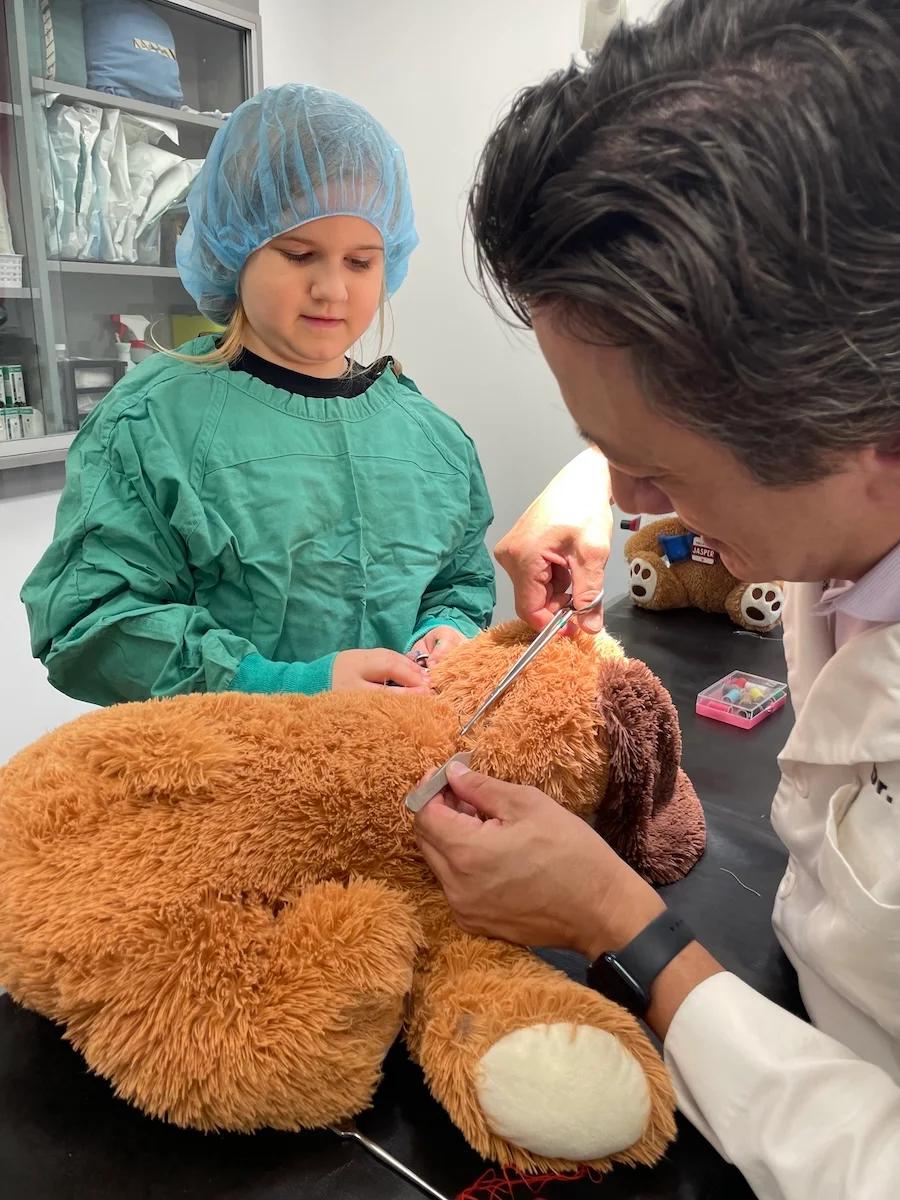Pet Soft Tissue Surgery & Orthopedic Surgery
Parkdale Animal Hospital helps restore your pet’s comfort and mobility with expert soft tissue and orthopedic surgery in Kitchener-Waterloo, ON.
Comprehensive Pet Soft Tissue Surgery Services
When your pet needs surgery, you want a team you can trust to deliver expert care. At Parkdale Animal Hospital, our highly experienced surgical unit offers a wide range of surgical services, including mass removals, gastrointestinal repairs, and broken bone treatments, all while ensuring your pet receives the highest standard of care. Our experienced veterinary team tailors each procedure to meet your pet’s unique needs, prioritizing their safety, comfort, and recovery.
During surgery, all patients are carefully monitored under anesthesia by a registered veterinary technician—someone with advanced training in anesthesia monitoring and the use of the latest technology to track vital signs. Anesthesia is a critical aspect of any procedure and must be taken seriously, which is why we are meticulous in ensuring your pet’s safety. Our updated technology, combined with the sharp eyes of our team, allows us to detect small issues before they become bigger problems, ensuring your pet’s well-being throughout the procedure. Having a registered veterinary technician on hand guarantees your pet receives optimal care and attention during these critical moments.
For more advanced surgeries, we can bring in a specialized surgeon, ensuring your pet receives expert care without needing to go elsewhere.
With our compassionate approach and a newly upgraded facility focused on patient care, you can trust that your pet is in the best hands.
When it comes to surgery, even teddy bears are in good hands under the watchful eyes of their owners of course! Rest assured, if we can fix a bear’s boo-boo, your pet is in the best care possible.

Our soft tissue surgery services include
- Tumour Removal: Safely removing tumours, whether they are harmless or more serious, to prevent potential health issues.
- Spay and Neuter Procedures: Essential surgeries to help prevent pet overpopulation and reduce the risk of certain diseases.
- Bladder Stone Removal: Treating urinary issues and preventing discomfort or potential blockages.
- Gastrointestinal Surgery: Addressing conditions like foreign body ingestion or intestinal blockages.
- Wound Repair: Providing surgical solutions for traumatic injuries or bite wounds that require specialized care.
Our team focuses on minimizing discomfort and promoting recovery. We follow the highest standards of care throughout the surgical process. We are committed to ensuring that your pet receives compassionate and attentive care before, during, and after surgery.
Expert Orthopedic Surgery for Pets
Orthopedic surgery is crucial for treating injuries and conditions related to bones, joints, and ligaments. Whether your pet has been injured in an accident or suffers from a degenerative condition, our veterinary surgeons are equipped to provide effective treatment. Parkdale Animal Hospital is dedicated to offering high-quality orthopedic surgery for pets in Kitchener-Waterloo, ON, helping them regain mobility and reduce pain.
Orthopedic procedures we offer include:
- Cruciate Ligament Repair: Restoring stability in the knee joint is a common issue in dogs.
- Fracture Repair: Surgical correction of broken bones to ensure proper healing.
- Patellar Luxation Surgery: Correcting dislocated kneecaps that can cause discomfort and mobility problems.
- Arthritis Management: Offering surgical options to alleviate pain from advanced arthritis.
Why Choose Parkdale Animal Hospital?
At Parkdale Animal Hospital, we understand how stressful it can be when your pet requires surgery. Our compassionate team works diligently to make the experience as smooth as possible. Here’s why pet owners in Kitchener-Waterloo, ON, trust us for their pet’s soft tissue and orthopedic surgeries:
- Experienced Surgical Team: Our veterinary surgeons have extensive soft tissue and orthopedic surgery training.
- Comprehensive Care: We provide continuous support from pre-surgery consultations to post-operative recovery.
- Individualized Treatment Plans: We develop individualized surgical and recovery plans based on your pet’s needs.
- Advanced Pain Management: Ensuring your pet’s comfort is a priority, and we use a range of pain management techniques to promote a smoother recovery.
- Communication and Support: We keep pet owners informed at every stage of the surgical process, ensuring that you feel confident in the care your pet is receiving.
If your pet needs soft tissue or orthopedic surgery in Kitchener-Waterloo, ON, Parkdale Animal Hospital is here to help. Contact us today to schedule a consultation and learn more about our services.
